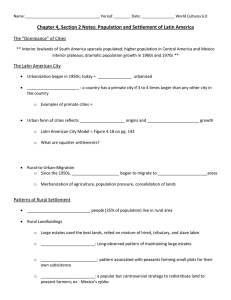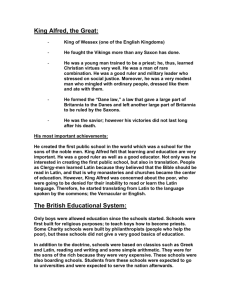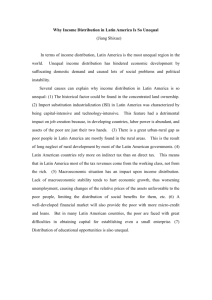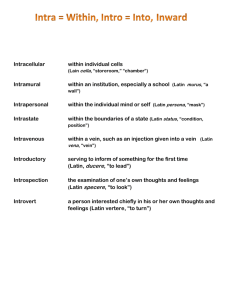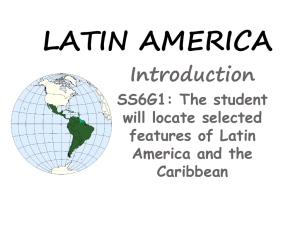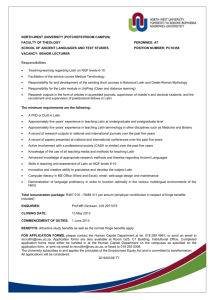16.1
advertisement
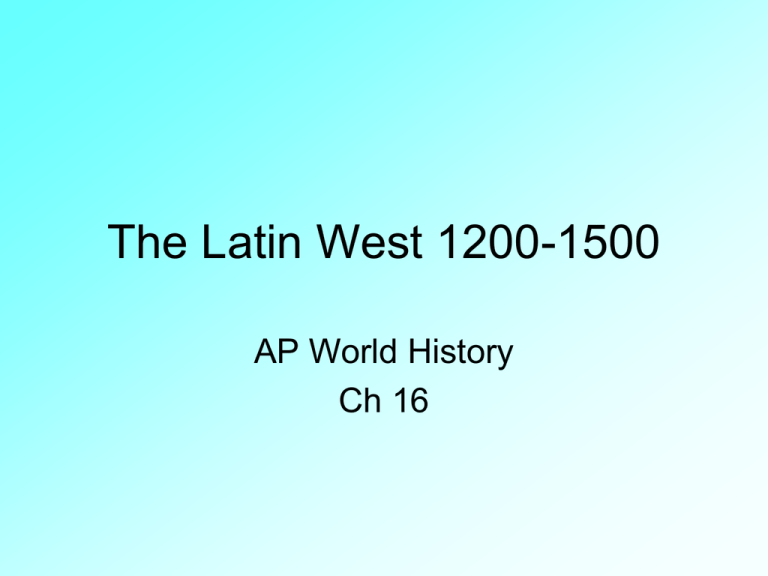
The Latin West 1200-1500 AP World History Ch 16 Chapter 16 Topics • • • • Rural Growth and Crisis Urban Revival Learning, Literature and Renaissance Political and Military Transformations Tips for understanding • • • • Read the introduction to chapter pg. 394 Review timeline Read conclusion page 415 Read “Environment and Technology” section pg. 406 The Clock Part 1. Rural Growth and Crisis The Latin West • Western Europeans regarded themselves as “Latin” • due to their allegiance to the Latin rites of Christianity and to the Pope in Rome. • Latin was also the language used by their literate members. The Latin West • 90% of the western European population was rural during the late Middle Ages. • The manor system did not create a huge surplus of food. • Peasants overworked and underpaid by Lords Three Field System • Agricultural system used to increase crop yields. • Crops grown on 2/3 of land. • 1/3 of farm planted in oats. • Oats replenished the soil and fed draft animals to help work fields. • 54 hour week avg. for farmers. • Population growth leads to new settlements as food production increases. • Swamps drained forests cleared for farms. • After 1250 many farming on land with poor soil • 1315-1317 Great Famine • Due to bad weather and poor soils. • Starvation widespread in Europe. • Life expectancy 30-35 years. Black Death 1347-1351 • Bubonic plague brought to Europe by Genoese )Italian) traders. Black Death 13471351 • Killed 1 out of every 3 western Europeans Impact of Plague • Laborers demand higher pay • Peasant Revolutions • Increase in per capita income • Brings about the end of serfdom in western Europe Social Rebellion • Wat Tyler in 1381 led English peasants in a revolt in London. • Demanded an end to serfdom and most kinds of manorial dues (taxes). • Wanted higher wages and social changes. • Murdered the archbishop of Canterbury and many officials. • Serfdom practically disappears. • The welfare of the rural masses generally improved after the Black Death. Population Growth • From 1350-1445 population of Europe doubles to 80 million (about the same as China’s) • Causes: • Economic growth • Warm temperatures • Few epidemics • New farming techniques New Industries • Water wheels, windmills and mines spring up along rivers. • Waterwheels • Had long been common in Islamic societies • Along with windmills provided power for increased food production and jobs. Rise of Industry and Cities • The water wheel provided the power for increased production. • Wind and water driven mills ground flour and corn. • The technology had existed in the Islamic world for a century. • Mill owners soon became very rich men! End Part 1

